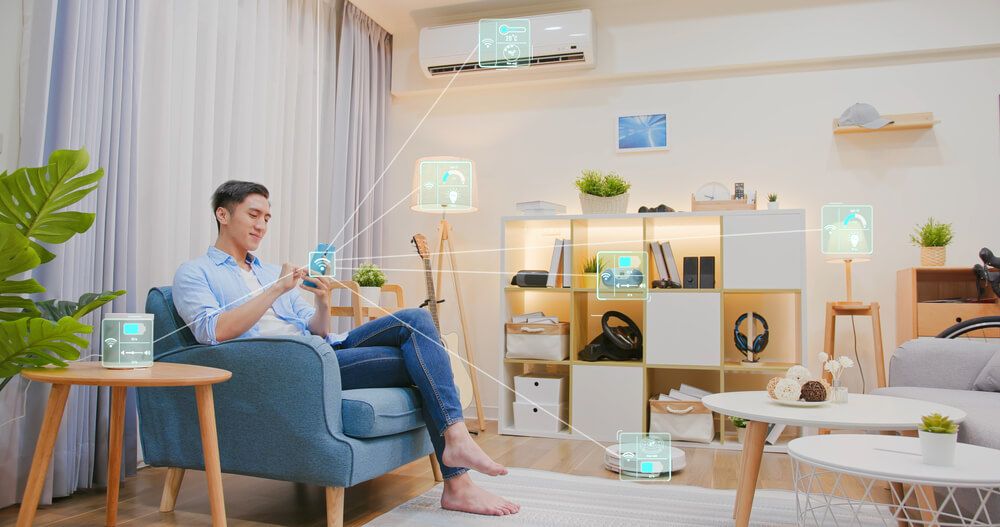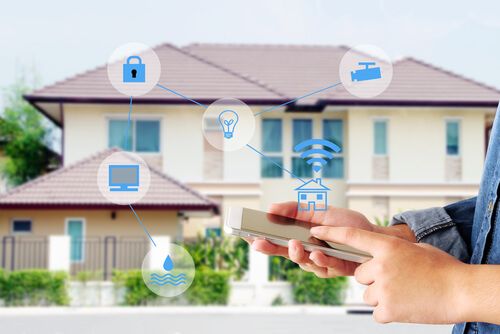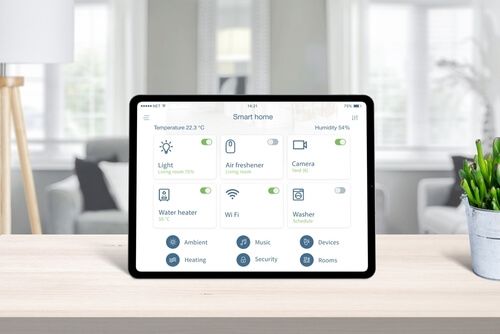What is a Smart House and How Does it Work?
Smart homes are all abuzz lately. But what exactly are they? We're here to explain.

Over the years, technology has become an essential part of our lives. It makes our lives easier and more comfortable as it allows us to manage many aspects of everything we do. This concept can also be applied to our homes. You’re likely familiar with the term smart house, but what exactly is it, and how does it work? In this post, we look at what defines a smart home and what you should consider when implementing this technology in your home.
What's in this post:
What Is A Smart Home?
Smart homes are about making your living space more efficient and convenient with technology. In a smart home, all your appliances, lights, security systems, and other devices are connected to the Internet and sit on a network. You can control them through a smartphone, tablet or computer even when you're not home.

This system gives you greater flexibility in managing and controlling your space, including energy usage and security. No more wondering if you forgot to turn off the stove while on your way to work or flying on vacation.
Benefits of having a smart home
Convenience might be the most obvious benefit of having a smart home, but there are other reasons why so many people are incorporating smart technology into their homes. Let’s take a look at some of them.
Ease of access
As we already mentioned, in a smart home, you can access your appliances, climate control and security remotely on your device. As long as you have access to the Internet and a stable connection, you can turn on or turn off the lights from your bed, your office or the beach. Similarly, you can adjust your heating and cooling before you get home or manage your sprinklers for maximum efficiency, even when you’re away.

Security
Smart homes also have greater security features, including motion sensors, cameras and real-life alerts. While traditional home security systems do much of this, they usually notify the security company and/or the police while you might be unaware of a potential break-in. With a smart home, you can check your home's security from anywhere in the world. You can also program the system to automatically turn on the lights when it gets dark outside or if any activity is detected outside your home.

Cost Savings
Smart homes are designed to save money by being more energy efficient than traditional homes. For example, you can program your lights or regulate the temperature when no one is home. Additionally, many smart appliances have energy-saving features like water sensors that automatically shut off the water when a leak is detected to prevent costly repairs. These features can help you save money on utility bills and maintenance costs in the long run.

Accessibility
Through automation, smart home technology can help reduce the physical demands of everyday tasks. Smart hubs like Alexa or Google Assistant can make daily activities like opening and closing doors, controlling lights and temperature or opening blinds accessible to the elderly and disabled. By eliminating strenuous labor and providing greater independence, smart homes make performing everyday activities easier for individuals who would otherwise struggle to do so.
How to make your home smarter
Making your home smarter is now easier than ever. All you need is a wifi connection, smart appliances or devices and a smart home system.
Smart devices can include appliances, televisions, doorbells, lightbulbs, garage doors and speakers. What differentiates these devices from regular ones is their ability to connect to a home network. They usually come with an app you can control remotely from your device.

The easiest way to integrate smart home devices is by replacing any appliances that need to be replaced. Bigger items like washing machines, dishwashers, fridges and televisions come with a higher price tag. They can put a dent in your wallet if changed all at once. Swapping things like lightbulbs, doorbells and thermostats for smart ones is a more cost-effective way to start without spending as much money.
Before swapping all your home appliances and installing smart devices, make sure you have enough bandwidth and wifi strong enough to handle them all. Once you identify what you want out of your smart home, make sure to do your research. There are many different systems and devices on the market, so make sure you familiarize yourself with the different options before you settle on one.
Pros and cons of smart homes
As with all technology, smart homes let us to do more with less effort and greater convenience. However, although smart homes present plenty of advantages, there are also drawbacks that should not be ignored. Let’s look at some of the pros and cons of smart homes.
Pros
- Relatively easy to implement
- Offer greater control over household items
- Increase security and personal safety
- Offer independence and better quality of life for the elderly and the disabled
Cons
- Replacing all gadgets and appliances can be costly
- Slows down Internet and wifi
- Potential privacy issues or hacking
- Won’t work during potential network outages
Conclusion
Smart homes offer convenience, security, cost savings and more, which make them an attractive option for those looking for modern technology solutions for their households. Investing in a smart home can be a great way to upgrade your lifestyle while saving time and money in the long run. However, before making any investments, research what system best suits your needs and budget to get the most out of your investment.
